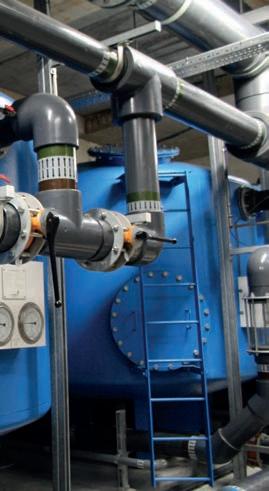
2 minute read
Plant room safety checklist
Gill Twell of Right Directions shares her top tips for avoiding accidents:
● Reduce chemical consumption by promoting showering before swimming, and keeping pool surrounds and equipment clean
Advertisement
● Try to stick to the same supplier. If you must use a different chemical, make sure you obtain safety data sheets and complete new COSHH (Control of Substances Hazardous to Health) assessments. Ensure staff are trained accordingly and know if container colours have changed
● Always have a trained, experienced and competent staff member available to supervise deliveries
● Ensure plant and storage rooms are secure, have appropriate chemical warning signage, and can only be accessed by authorised and properly-trained people
● Make sure new or newly-trained staff and contractors have time to familiarise themselves with your site before being left in charge of plant or chemical procedures

● Have your plant serviced regularly by a competent contractor and ask for a copy of their Risk Assessments and Method Statements (RAMS) and insurance
● Ensure all staff are trained in what to do if there’s a suspected chlorine gas emission or chemical spill and are able to act quickly. Procedures should be documented in your Emergency Action Plan (EAP)
● Make sure appropriate PPE is available both inside and at the entrance of the plant room and put in place a process to check the equipment and expiry dates training for our centres. I’m split between two sites so I can spend time with the operators and main team and I’m always there if they have queries. It’s built into their induction that if they’re not sure about something they should step back and pick up the phone. We also have an internal auditing structure with a monthly audit and we aim to roll through the whole health and safety management system once a quarter.”
Internal monitoring is just as important as external, emphasises Gill Twell of safety consultancy Right Directions. “Walk the walk with the people who are doing these jobs and actually watch someone change the barrel or do a backwash of the filtration system. And never get complacent.
“We sometimes go into plant rooms and ask to look at the PPE, and they produce it still in the cellophane wrappers, so you can tell it has not been used,” Twell said. “You should be using it every time you transfer chemicals. I’ve also seen masks that are past their expiry date. It shows you that people don’t understand the dangers of the chemicals they’re handling and the consequences if things go wrong.
“It needs to be drilled into employees that if they put a barrel in the wrong room, there’s the potential to kill most of the people in the building,” she warned. “It’s about making them really understand the importance of doublechecking that label.”
90% of pools use sodium hypochlorite or calcium hypochlorite to disinfect the water

